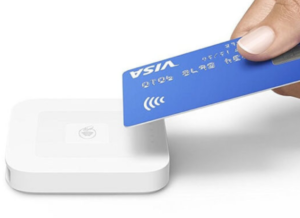Sometimes, it can be like the bad lunch trade I had in grade school. I ended up with sugar-free homemade apricot jelly, a less-than-desirable combination with peanut butter. In this transaction, I gave up a bag of Cool Ranch Doritos, which I quickly realized was a bad deal for me. I didn’t eat past the first bite, and the kid that did me wrong in that deal, Rudy, couldn’t help but grin as I tried to chew on a mouthful of what at the time could only be described as a shit sandwich. No, he didn’t choke on the Doritos or anything, although at the time I kind of wished he did. But I did get some childish satisfaction when Tim T., our class bully, came around just as Rudy opened the bag of Doritos and grabbed the bag from Rudy, took a handful of chips, and handed a half-empty bag back. Rudy finished the remaining chips but lost that grin he had about the transaction.
The premise of the deal was good, and I went into the transaction with high confidence. Two pieces of what was clearly white bread, peanut butter which was visible from the bag, and the lack of crust– also visible from the bag. We were so close to a great deal all around, where everyone got something of respective value from the situation, yet we failed due to what was not visible. The apricot jelly was not expected by me, and the Doritos tax was not anticipated by Rudy.
If we take the concepts of payments all the way back, way back to the beginning of written history, we have two parties exchanging items of implied and assumed value with each other. Like the bag of Doritos exchanged for a PB&J sandwich, a universally accepted currency (the Doritos) was traded in exchange for a more specific bit of goods, the PB&J sandwich. The goods that were acquired by the universal currency happened to be specific to my wants, needs, and overall expectations at that given time. This is not unlike the consumer retail environment, where retailers provide goods and/or services which are specific to the consumer’s current needs, in exchange for a universal instrument of trade – money. But what is money, and what makes it universally acceptable by retailers?
While there are tons of books written about the concepts, philosophies, history, use and misuse of money going back millennia, in this post we’re going to focus on value for modern retailers – or implied and assumed value, that is needed for something to qualify as money in the modern retail organization. A modern retail organization needs to pay for payroll, product, rent, utilities, technology, and still be profitable. Oh yeah, and payment processing fees. Luckily, the universal value accepted by most retail organizations is government-backed currency which also happens to be accepted by all the parties needing payment to ensure that the retailer has uninterrupted service to consumers. And, in many parts of the world, this government backed currency is stable enough in value from the time the customer pays for goods and/or services and when the currency needs to be paid out to other parties. With this, we can now establish that money, at least from a retailer perspective, with a rough definition – store of value, value stability, and can be generally used to transact with other parties – which we’ll call interchangeability.
A Shit Sandwich – For Retailers
The terms technology investment and payment processing fees, you guessed it, implies that much of this retail currency is transacted electronically. Credit, debit, EBT, and payment wallets, these payment methods are entered in all types of ways – contact with terminals, contactless proximity based, scanning of barcodes, transacting from a payment wallet, and online data entry just to name a few. The infrastructure and technical components needed to support these payment types and entry methods are also universally available and accepted. Payment terminals, encryption, payment gateways, and weird questions on the payment terminal when all I want to do is pay for my 4th tub of ice cream this week and leave with my head down and my mask on. But alas, we digress. Point is, that electronic payments have been an accepted form of transactional value exchange for a few decades now, and despite the costs and infrastructure requirement for retailers, it seems to be what we build on in the payments universe to get us closer to the promised land of frictionless retail environments. Unless you’re just trying to buy a tub of ice cream for the 6th time this week and keep getting asked questions on the pin pad when all you want to do is pay and leave and be able to go to the gym tomorrow since the past couple of months have been rest days. In that one situation, we still have a lot of work to do as an industry to remove friction for the consumer.
While the methods we use for electronic payments continue to evolve, so do transaction fees and the complexity of processing requirements, which just means more cost for retailers, and ultimately consumers. For a typical modern merchant, the supporting technologies and infrastructure are still based on the same core technology stacks of yesteryear, but the retailer costs to support these transactions and associated infrastructure are recalibrated much more frequently. Data security, payment method capabilities, real-time transaction disposition, and fast settlement of funds are what retailers are taxed… ahem… charged for by payments technology and processor organizations. This adds a third-party to the transaction between retailers and their customers, kind of like how Tim T. got a piece of Rudy’s Doritos revenue. Most retailers also lose their grin once all these 3rd party charges creep into their transactions.
Crypto To the Rescue?
Crypto currencies generate a lot of excitement lately due to the possibility that this method of value storage and exchange might give us all the transaction facilitation of electronic payments as they are today, without all the sticky hands reaching into transactions to get a piece of it. One of the first things a consummate industry professional would do is evaluate the applicability of this form of payment in a modern retail environment, before digging into the financial or coolness factors.
So then, let’s dig right into the coolness factors first. Accepting crypto currencies opens a merchant’s environment to unique innovation possibilities, built on a totally different stack without all the layers that go into an interchange transaction. To start with, it eliminates the concept of foreign exchange, since crypto currencies do not derive, or base intrinsic value upon, government or political structures. Another coolness factor is that as retailers have continued the shift to online commerce, crypto wallets and frameworks are built to be seamless, both in form and function, across any point of interaction – in store, online, or in completely unattended environments. And security? Transactional and data security is also achieved in a common approach across all the retailer’s interaction points by leveraging the proof of ownership protocol built right in. Unlike credit card account numbers or track data which are pretty much transferrable to the bearer of that information, crypto currencies are, well, cryptographically secure and require the rightful owner to present a cryptographic private key to promote a transaction across the block chain. And all of this has been available for the past decade or so, with much more capability, security, and portability being innovated on since.
Ehhem, now back to the evaluation part. Does the acceptance of crypto currencies in a retail environment cover the requirements of transacting with money? Let’s see how it stacks up across our three primary requirements:
Store of Value – Crypto currency is arguably a store of value. No, it’s inarguably a store of value as much as any fiat currency. Crypto currencies as an instrument of trade are backed by the global market which trade these currencies against fiat currencies. Err, well, so they are a store of value relative to other stores of value I guess? But then, so are fiat currencies. A US Dollar is worth what it represents in general commodities for the most part. Ever heard of the Petro Dollar?
Value Stability – Uh, no.
Interchangeability – The ability to use crypto currencies to transact with other parties is a tricky factor to address here in all of its scenarios, so we’ll focus on the capabilities of the instrument itself. Yes, crypto currencies are interchangeable and portable, and can be used just like any other currency instrument to settle debts in any amount up to the capitalization of that crypto instrument. But, the capitalization limitation is true for any type of instrument. Have you ever tried to write a check for $30 trillion at Walmart? Yeah, me neither, not since I got arrested last time anyway. Based on these three factors to determine if crypto currencies can have application in the retail environment, a strong and conclusive answer can be drawn– maybe. This farce of a qualitative evaluation just shows that retail environments will only adopt crypto currencies once they are already adopted by the mass consumer, which retail environments cause to happen in the first place. We’re stuck in a catch-22 which is caused by an enterprise-level innovation void with crypto currencies. And that innovation void is because retail environments are tired of payments, tired of paying just to get paid, tired of supporting complex rules and systems that get more challenging every year, and tired of fraud and security issues.
It’s all about the Block Chain, Baby!
Retailers are worried about trading their partial bag of Doritos for a PB&J which may just be sugar-free, homemade apricot jelly. Not usable, not tradeable, not what we were hoping and expecting. But it’s the idea that retailers can end up with the whole of the transaction, not a percentage of the full transaction, makes this something more than worthwhile to pursue. The crypto problems can be solved, they are not recurring or pervasive with the right amount of care and investment. The key will be in supporting verifiable and well-defined crypto currencies and their related technology stacks in the retail enterprise.
That’s what it is, the solution. While we’ve been looking at the instrument, the crypto currency itself, it’s the related technology stack, Block Chain, which is where the investment and ROI can be found. By having large retailers as anchors on large proof-of-work networks, we can leverage trusted validation for immediate authorization just like current electronic payments in our current day. And, as more and more trusted participants join these validation stacks, the adoption, work value costs, and interchangeability of the crypto currencies should drive down processing and technology platform costs – unlike the current electronic payments industry in which costs seem to only trend up.
By starting to ease the acceptance of crypto currencies into the retail environment, retailers will be first-class participants in a new technology, one that can be built for them and around their needs. There will be some risk of loss, but that loss is far outweighed by the possibility of retaining more transactional revenue once all the dust settles. Once we embark on real innovation in the retail environment, we will enable consumers to transact and store value in these crypto currencies, resulting in long-term stabilization. And B2B adoption will follow enabling retail organizations to pay their operational costs interchangeably. Once we get start getting the train on crypto currencies in retail moving, we will have a sustainable instrument for trade that is not subject to all the bad things that come with our current payment landscape – half bags of Doritos.




